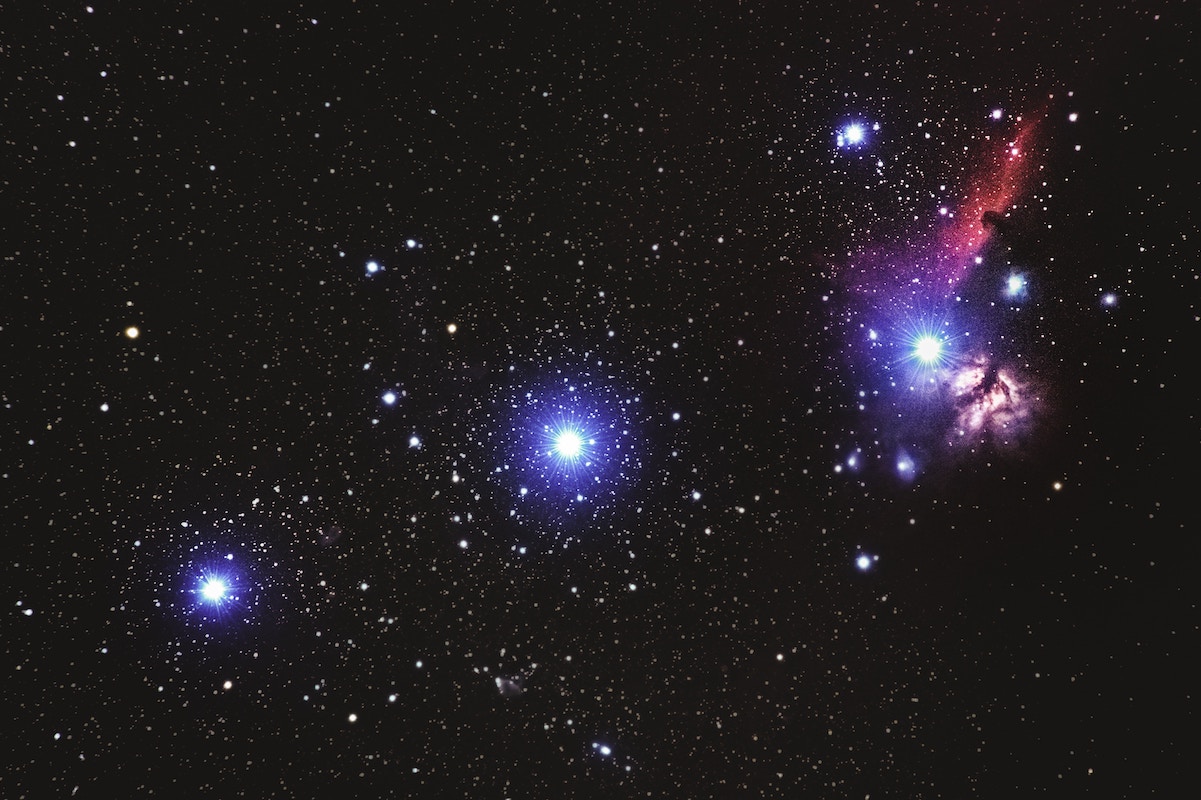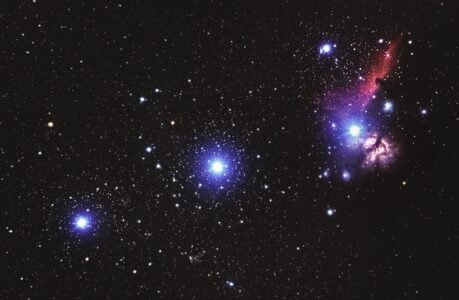Have you ever looked up at the night sky and wondered what the colors of stars mean? Stars come in a variety of colors, and each hue has a specific meaning and significance. Understanding the colors of stars can help us better understand the universe and our place within it.
In this article, we’ll take a closer look at the five main colors of stars and what they mean.
Blue Stars
Blue stars are the hottest and brightest stars in the universe. They are extremely rare and typically only exist for a short period before exploding in a supernova. Blue stars are also the most massive, with some weighing in at over 100 times the mass of our Sun.
These stars emit ultraviolet light, which is why they appear blue to our eyes. Blue stars are also important because they play a crucial role in the formation of new stars. When a blue star explodes in a supernova, it releases elements like carbon and oxygen into the universe, which are then used to form new stars.
White Stars
White stars are slightly cooler than blue stars, but still incredibly hot. They emit a bluish-white light and are often referred to as “A-type” stars. White stars are typically younger than our Sun and have a shorter lifespan.
One interesting fact about white stars is that they are often used as a standard for measuring the brightness of other stars. Astronomers use a scale called the “apparent magnitude” to measure the brightness of stars. The brighter the star, the lower its apparent magnitude. The magnitude of a white star with a brightness of 0 is used as a reference point for all other stars.
Yellow Stars
Yellow stars, like our Sun, are medium-sized stars that emit a yellow light. They are often referred to as “G-type” stars and have a lifespan of around 10 billion years. Yellow stars are important because they are the most common type of star in the universe and are often the center of planetary systems.
One interesting fact about yellow stars is that they emit a lot of light in the visible spectrum, which makes them easy to observe and study. This is why astronomers have been able to gather so much information about our own Sun and other yellow stars in our galaxy.
Orange Stars
Orange stars are cooler than yellow stars and emit a reddish-orange light. They are often referred to as “K-type” stars and have a lifespan of around 20-30 billion years. Orange stars are important because they are the most likely stars to have planets that can support life.
One interesting fact about orange stars is that they are often used to study the behavior of stars with planets. Astronomers can study the light emitted by an orange star to determine the size and composition of its planets.
Red Stars
Red stars are the coolest and dimmest stars in the universe. They emit a deep red light and are often referred to as “M-type” stars. Red stars have a long lifespan, with some living for trillions of years.
Red stars are important because they are the most common type of star in the universe. They are also known for their intense magnetic fields, which can lead to powerful solar flares and coronal mass ejections.
What colour is our sun?
Our sun is a yellow star, specifically a “G-type” main-sequence star, which means it emits a yellow-white light. The sun’s surface temperature is about 5,500 degrees Celsius (9,932 degrees Fahrenheit), which puts it in the middle range of stars in terms of temperature. The sun’s yellow color is a result of its temperature and the way its light interacts with Earth’s atmosphere.
What colour are the 20 brightest stars in the Sky and what does that tell us about the star
The 20 brightest stars in the sky vary in color and spectral type, which is a classification system that astronomers use to describe stars based on their temperature, luminosity, and other physical properties.
Here are the colors and spectral types of the 20 brightest stars:
- Sirius – Blue-white (A1V)
- Canopus – White-yellow (F0II)
- Alpha Centauri – Orange (K1V)
- Arcturus – Orange (K0III)
- Vega – Blue-white (A0Va)
- Capella – Yellow (G5III)
- Rigel – Blue-white (B8Ia)
- Procyon – White-yellow (F5IV-V)
- Achernar – Blue-white (B6V)
- Betelgeuse – Red (M1-M2Iab-Ip)
- Hadar – Blue-white (B1Ia)
- Altair – White (A7V)
- Acrux – Blue-white (B0.5IV-V)
- Aldebaran – Orange (K5III)
- Antares – Red (M1.5Iab-Ib)
- Spica – Blue-white (B1III-IV)
- Pollux – Orange (K0III)
- Fomalhaut – White (A3V)
- Deneb – White (A2Ia)
- Mimosa – Blue-white (B0.5IV-V)
The color and spectral type of a star can tell us a lot about the star’s physical properties and its stage of evolution. For example, blue-white stars like Sirius and Rigel are very hot and young, while red stars like Betelgeuse and Antares are cooler and older.
The spectral type of a star is also related to its luminosity, or brightness. For example, a blue-white star like Rigel is very luminous because it is very hot and has a high surface area, while a red star like Betelgeuse is less luminous because it is cooler and has a smaller surface area.
Overall, the colors and spectral types of the 20 brightest stars in the sky give us insight into the diversity of stars in the universe and the different stages of their evolution. By studying the colors and properties of stars, astronomers can continue to unlock the mysteries of the cosmos and learn more about our place in the universe.
Understanding the colors of stars is important because it helps us better understand the universe and our place within it. Each color has a specific meaning and significance, from the hot and bright blue stars to the cool and dim red stars. By studying these colors, astronomers can learn more about the formation of new stars, the behavior of planets, and the evolution

